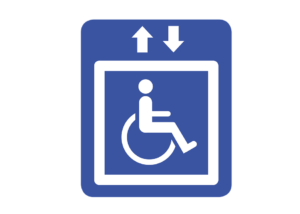Índice


Not only is recovering debts an economic necessity, it's also a matter of image.
Does someone owe you money for a product you delivered to them or a service you carried out? The team at Conesa Legal will help you.
First, we will ask you to send us specific information about the debt to be recovered, along with any relevant documents such as invoices, proof of delivery or service, etc. Click here to download the information that we will need you to provide us with.
Via this link you can download the information we will need in order to claim back the money.
The next step is to proceed to the Courts. We will present a claim to the Courts which will lead to the debtor receiving a court order for payment. This process is called the ‘procedimiento monitorio’.
(See below for answers to frequently asked questions about the specific steps of the different judicial procedures).
What happens after the court order for payment depends on the debtors’ response. If the debtor pays, the proceedings will be archived, but:
If the debtor does not pay and does not appear before the Court, the order for payment proceedings will be declared terminated, and Conesa Legal, on your behalf, will initiate the proceedings for enforcement by seizure of the debtor's assets.
Our clients have many reasons why they want to claim back the debts owed to them, from financial necessity to reputational protection. However, we understand that you could find yourself in a position in which the legal fees to claim the money back are higher than the amount you are owed, or the debt in itself may have left you in a difficult financial position.
That’s why we have separated out these steps, so that you can choose which method best suits your needs and means. It’s important to note that we actually highly recommend starting with the first step of out-of-court communications as, despite being the cheapest option, it has a great success rate.
Click this link to ask us for a quote to claim back any outstanding invoices you're owed:
Should you be facing non-payment of bills on a regular basis, we can put in place a monthly payment plan in line with your needs, which would include:
Click here to find out how to recover VAT from unpaid invoices

We can help you in Galicia too, with civil lawyers in Lugo.
The payment order procedure is a very useful debt collection method for all types of creditors, whether they are businesses, freelancers, individuals, or homeowners' associations. It is used to demand payment of debts that are liquid, certain, due, and payable.
After submitting the application to the Court, the debtor will receive a payment demand.
One advantage of this route is that if the debtor does not file a written objection to the proceedings with the Court, enforcement actions (seizure of bank accounts, etc.) can be initiated immediately.
If the defaulting party lodges a statement of defence, the proceedings will be converted into either oral or ordinary proceedings (see below), depending on the amount of the claim.
The procedure is simple and quick. To initiate it, a request or demand for a payment order must be submitted along with the document that proves the debt. This document can be:
We are here to assist you and help you avoid errors and delays. It is important to note that a lawyer (Article 31 Lec) or a court representative (Article 23 Lec) is not required for the initial request, although it is advisable to ensure that no subsequent deadlines are missed.
The claim or request must be submitted to the Court of First Instance of the debtor or the place where they can be found, except in cases of non-payment of amounts owed for common expenses in property owner associations. In these cases, the association may choose between the court of the debtor's residence or the court of the location of the property belonging to the association.
There is no monetary limit, so a claim can be filed in court for any amount of debt.
Regarding costs, the general rules will apply: if the creditor obtains a fully favorable judgment, the lawyer's fees and the court representative's fees resulting from their involvement will be included, even if their intervention was not mandatory.
Once the claim is accepted, the debtor will be required to pay within a period of 20 business days:
The archiving of the case will be agreed or a hearing will be scheduled if requested in the opposition and counter-opposition documents. (Article 818 LEC).
Oral proceedings will be conducted if the debt does not exceed €15,000. Accordingly, the creditor must file a claim for such proceedings. Neither the intervention of a lawyer nor that of a court representative will be necessary in such proceedings if the claim does not exceed €2,000.
There are no costs if the action is not brought.
When opposition is lodged in proceedings for a sum of more than €15,000, the ordinary procedure will be ordered and the creditor who initiated the initial order for payment must file a new claim within 1 month of receipt of the debtor's objection. Only in this case will there be costs if he/she does not file the claim.
(It should be noted that the claim for non-payment can be filed without first initiating the payment order ('monitorio') procedure.)
In this case, the Exchange Process ('Proceso Cambiario') will be chosen.
These are proceedings in which cheques, promissory notes or other documents of exchange are claimed.
Together with the claim, you will have to submit a bill of exchange, cheque or promissory note to the Court of First Instance of the debtor's residence.
The Court will require the debtor to pay within 10 business days and will order the immediate, precautionary seizure of the debtor's assets, as well as interest for late payment, expenses and costs, should the payment request not be heeded.
However, the embargo shall not be lifted in the following cases:
Without prejudice to this, within ten days of the payment order, the debtor may lodge an objection by means of a claim, in which case the creditor shall be notified of the claim in order to be able to challenge it within 10 days, and a hearing may be held if the parties so request, which shall follow the oral proceedings.
The objection shall be made in the form of a claim. Within ten days, the Court shall issue a ruling on the objection. If the objection is rejected and the judgement is appealed, it shall become provisionally enforceable in accordance with the provisions of the Law.
Monetary enforcement takes place when an enforceable claim is filed, requesting enforcement of a monetary debt, whether or not it is contained in a judicial or non-judicial enforceable instrument. The most common is the enforcement of judgments, but there are other instruments that can be enforced without a court decision.
Enforcement will be ordered for the amount which has been sought in the enforceable claim in respect of the principal sum and the ordinary and late payment interest due, increased by the amount provided to cover any interest which may accrue during the enforcement and its costs.
The amount provided for these two items, which shall be provisionally fixed, may not exceed 30 per cent of the amount claimed in the enforceable claim, without prejudice to the subsequent settlement.
The declaration of enforceability shall not contain an order for payment against the debtor when the enforceable instrument consists of decisions of the Legal Secretary for the Administration of Justice, judicial or arbitration decisions or decisions approving transactions or agreements reached in the proceedings, or mediation agreements, which oblige the debtor to deliver specific sums of money, in which case the debtor's property may be seized directly.
If, on the other hand, the enforcement for the delivery of specific sums of money is not based on procedural or arbitral decisions, the enforcement order will contain a demand for payment by the defendant for the principal sum claimed as well as interest accrued, if any, up to the date of the claim and if he/she does not pay on the spot, the Court will proceed to seize his/her assets to the extent sufficient to cover the amount for which enforcement has been ordered and the costs of said enforcement. That is except when the enforceable claim has been accompanied by a notarial deed certifying that the defendant has been requested to pay at least ten days prior.
If the defendant pays at the time of the order for payment or before enforcement is declared, the Legal Secretary for the Administration of Justice shall place the corresponding sum of money at the disposal of the claimant, and shall provide the defendant with proof of payment, the costs being borne by the debtor unless he proves that, for reasons for which he is not responsible, he was unable to make payment before the creditor brought the enforcement proceedings.
Once interest and costs have been paid, if any, the Legal Secretary for the Administration of Justice shall issue a decree terminating the enforcement.
If he/she fails to pay, once enforcement has been ordered, seizure of assets shall be made.
Unless the claimant indicates assets the seizure of which he/she considers sufficient for the purpose of the enforcement, the Legal Secretary for the Administration of Justice shall request the defendant to declare assets and rights sufficient to cover the amount of the enforcement, stating, where appropriate, any charges and encumbrances, as well as, in the case of real estate, whether they are occupied, by whom and with what title.
At the request of the claimant who is unable to designate sufficient assets for the purpose of the enforcement, the Legal Secretary for the Administration of Justice shall, by way of writ, order the financial institutions, public bodies and registers and natural and legal persons indicated by the claimant to provide a list of the assets or rights of the defendant of which they are aware. In making such a request, the claimant shall briefly state the reasons why he/she considers that the institution, body, register or person concerned has information on the assets of the defendant. At the request of the claimant and at his/her own expense, his court representative may intervene in the service of the writs that have been issued for this purpose and receive their completion, without prejudice to the relevant provisions of the law.
The Legal Secretary for the Administration of Justice shall not request information from bodies and registers when the claimant could obtain it himself/herself, or through his/her court representative, duly authorised to do so by his/her grantor.
The seizure of assets will be carried out according to a series of rules. Thus, if the creditor and debtor have not agreed otherwise, whether as part of the enforcement or not, the Legal Secretary for the Administration of Justice responsible for the enforcement will seize the assets of the debtor, taking into account the greatest ease of disposal and the least onerousness manner for the debtor.
If the circumstances of enforcement make it impossible or very difficult to apply the above criteria, the assets shall be seized in the following order:
1. Money or current accounts of any kind.
2. Credits and rights that can be realised immediately or in the short term, and titles, securities or other financial instruments admitted for trading on an official secondary securities market.
3. Jewellery and works of art.
4. Monetary income, irrespective of its origin and the reason for its accrual.
5. Interest, income and revenue of all kinds.
6. Movable or semi-movable property, shares, stocks or securities not admitted to official trading and shares in companies.
7. Immovable property.
8. Wages, salaries, pensions and income from self-employed professional and commercial activities.
9. Medium and long-term credits, rights and realisable securities.
The seizure of undertakings may also be ordered when, taking into account all the circumstances, it is preferable to the seizure of their various assets.
The following shall not be subject to seizure under any circumstances:
1. Assets that have been declared inalienable.
2. Accessory rights, which cannot be separated from the principal.
3. Assets which do not, in themselves, have any patrimonial content.
4. Assets that have been expressly declared unseizable by virtue of a legal provision.
The following shall also be unseizable:
(1) The furniture and household goods, as well as the clothes of the defendant and his/her family, insofar as they cannot be considered superfluous. In general, assets such as foodstuffs, fuel and others which, in the opinion of the Court, are essential for the person being sued and their dependants to be able to provide for their subsistence with reasonable dignity.
2. The books and instruments necessary for the exercise of the profession, art or trade in which the debtor is engaged, when their value is not proportionate to the amount of the debt claimed.
3. Sacred property and property dedicated to the worship of legally registered religions.
4. Amounts expressly declared unseizable by law.
5. Property and amounts declared unseizable by treaties ratified by Spain.
Furthermore, the following may not be seized:
1. Wages, salaries, pensions, remuneration or its equivalent, which do not exceed the amount indicated for the minimum interprofessional wage.
2. Wages, salaries, earnings, remuneration or pensions that are higher than the minimum interprofessional wage shall be seized in accordance with this scale:
1. For the first additional amount up to the amount that is twice the minimum interprofessional wage, 30%.
2. For the additional amount up to the equivalent of one third of the minimum interprofessional wage, 50%.
3. For the additional amount up to the equivalent of a fourth of the minimum interprofessional wage, 60%.
4. For the additional amount up to the equivalent of a fifth of the minimum interprofessional wage, 75%.
5. For any amount exceeding the above amounts, 90%.
If the claimant is the beneficiary of more than one payment, all of them shall be combined in order to deduct the unseizable part only once. Likewise, the salaries, wages, pensions, remuneration or equivalent of the spouses shall be cumulative when the economic regime that governs them is not that of separation of property and income of any kind, something which they shall have to prove to the Legal Secretary for the Administration of Justice.
With regard to the family charges of the defendant, the Legal Secretary for the Administration of Justice may apply a reduction of between 10% and 15% in the percentages established in numbers 1, 2, 3 and 4 of the above.
However, the above shall not apply when it comes to the enforcement of a judgment ordering the payment of maintenance, in all cases in which the obligation to pay maintenance arises directly from the law, including the pronouncements of judgments handed down in cases of annulment, separation or divorce on maintenance owed to the spouse or children or of decrees or public deeds that formalise the regulatory agreement that establishes them. In these cases, as well as in those of the corresponding precautionary measures, the Court shall determine the amount that may be seized.
Access the full registry and financial information of companies through eInforma.
Ready to recover the sums owed to you? Contact us and we will start the process in line with your needs and wishes.
Before initiating legal action the following will be necessary:
Once these steps have been taken, the order for payment will be processed as indicated in this article.
Click here to download a template lawsuit from the BOE (Official Gazette of the Spanish State) that can be used to claim the debt of a debtor of a Homeowners' Association.
In the Labour Courts it can be necessary to claim amounts owed by the company, or even by the worker when there is a post-contractual non-competition agreement. The most normal thing to do is to claim for wages owed.
Our lawyers and social graduates are specialists in ordinary lawsuits regarding claims for payment through the labour courts. Once the judgement has been passed, enforcement of the judgement must be requested until such time as an insolvency order is obtained should no assets be found. It is then when you can go to FOGASA or the Wage Guarantee Fund to request that the State pays part of what is owed within the legally established limits.
We can assess the liability of the director regarding the non-payment of the debt, considering the possibility of claiming the unpaid debt from the person in charge of the company.
We assist, advise, file for insolvency proceedings and/or safeguard the qualification and correct payment of debts or unpaid amounts in the bankruptcy phase.
Necessary bankruptcy is filed by a creditor, before the debtor does so (voluntary bankruptcy), requesting that the debtor be declared bankrupt. A creditor who applies for insolvency proceedings has certain advantages:
Contact our bankruptcy specialists.
We study the debtor's solvency by investigating their assets using the Commercial and Property Registers and/or the Real Estate Register, and once the procedure has been initiated we can investigate their banking solvency.
We also carry out socio-labour audits:
Tell us briefly how we can help you so that we can assign the lawyer who can best advise you.
+34 932 020 256
+34 932 411 174
info@conesalegal.com
Avda. Diagonal 467, 6-1
08036 Barcelona (Spain)
